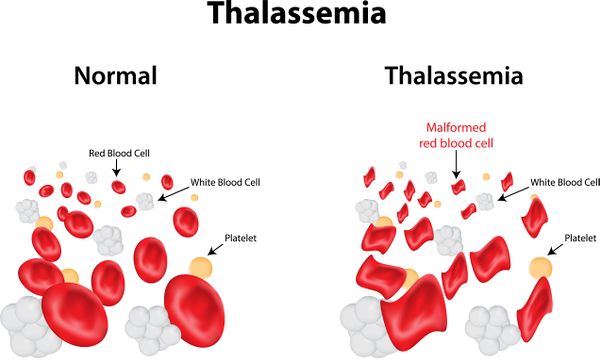Sickle thalassemia is a genetic disorder that combines features of both sickle cell disease (SCD) and thalassemia. Thalassemia is a blood disorder characterized by reduced production of hemoglobin, which can lead to anemia, while sickle cell disease is a genetic disorder where red blood cells become rigid and sticky, taking on a crescent or sickle shape, which can cause blockages in blood vessels.
Symptoms:
Symptoms of sickle thalassemia may include:
- Anemia, which can cause fatigue, weakness, and pale skin.
- Pain crises, where sickle-shaped red blood cells block blood flow, leading to pain in the affected area.
- Jaundice (yellowing of the skin and eyes) due to the breakdown of red blood cells.
- Swelling of hands and feet.
- Delayed growth and development in children.
- Increased risk of infections.
Causes:
Thalassemia is caused by inheriting genes for both sickle cell trait and thalassemia from one or both parents. The sickle cell trait involves a mutation in the HBB gene, while thalassemia involves mutations in the genes responsible for producing hemoglobin.
Treatment:
Treatment for thalassemia focuses on managing symptoms and complications. This may include:
- Blood transfusions to replace abnormal red blood cells with healthy ones.
- Medications to manage pain, prevent infections, and reduce the risk of complications.
- Hydroxyurea, a medication that can help reduce the frequency of pain crises.
- Folic acid supplements to support red blood cell production.
- Bone marrow or stem cell transplant may be considered in severe cases.
Prevention:
Preventing thalassemia involves genetic counseling and testing for carriers of the trait, especially in populations where the condition is more prevalent. Couples who are carriers can be informed about the risks of passing the condition to their children and can make informed decisions about family planning, including options such as prenatal testing or in vitro fertilization with preimplantation genetic diagnosis to avoid passing on the condition to future generations.
































